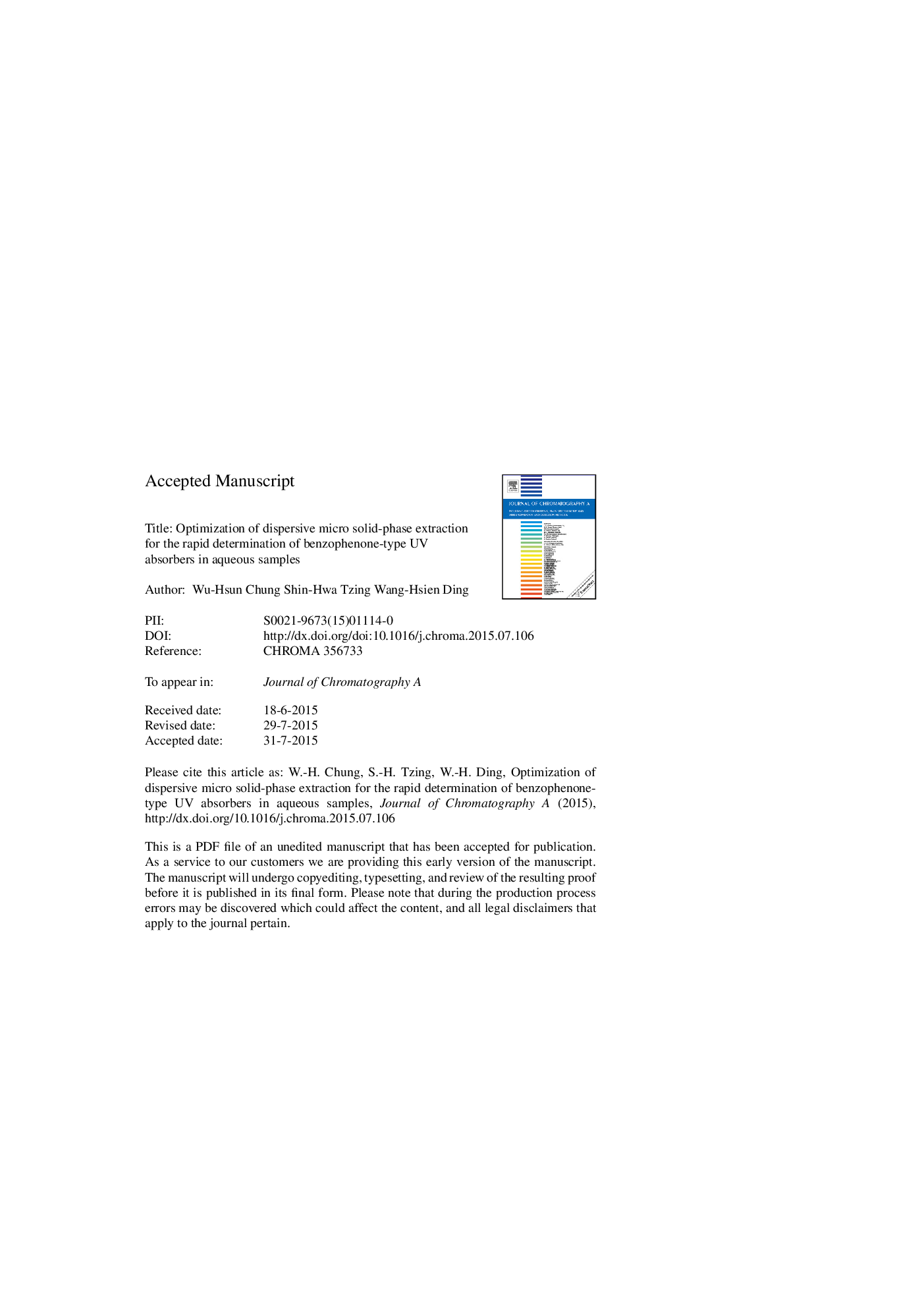| کد مقاله | کد نشریه | سال انتشار | مقاله انگلیسی | نسخه تمام متن |
|---|---|---|---|---|
| 7611495 | 1493515 | 2015 | 30 صفحه PDF | دانلود رایگان |
عنوان انگلیسی مقاله ISI
Optimization of dispersive micro solid-phase extraction for the rapid determination of benzophenone-type ultraviolet absorbers in aqueous samples
ترجمه فارسی عنوان
بهینه سازی استخراج میکرو جامدات فشاری پراکنده برای تعیین سریع جذب کننده های فرابنفش بنزوفنون در نمونه های آبی
دانلود مقاله + سفارش ترجمه
دانلود مقاله ISI انگلیسی
رایگان برای ایرانیان
کلمات کلیدی
موضوعات مرتبط
مهندسی و علوم پایه
شیمی
شیمی آنالیزی یا شیمی تجزیه
چکیده انگلیسی
A solvent-free method for the rapid analysis of six benzophenone-type UV absorbers in water samples is described. The method involves the use of dispersive micro solid-phase extraction (DmSPE) followed by the simultaneous silylation and thermal desorption (SSTD) gas chromatography-mass spectrometry (GC-MS) operating in the selected-ion-storage (SIS) mode. A Plackett-Burman design was used for screening and a central composite design (CCD) for optimizing the significant factors was applied. The optimal experimental conditions involved immersing 1.5 mg of the Oasis HLB adsorbent in a 10 mL portion of water sample. After vigorous shaking for 1 min, the adsorbents were transferred to a micro-vial, and were dried at 122 °C for 3.5 min, after cooling, 2 μL of the BSTFA silylating reagent was added. For SSTD, the injection-port temperature was held at 70 °C for 2.5 min for derivatization, and the temperature was then rapidly increased to 340 °C to allow the thermal desorption of the TMS-derivatives into the GC for 5.7 min. The limits of quantitation (LOQs) were determined to be 1.5-5.0 ng/L. Precision, as indicated by relative standard deviations (RSDs), was equal or less than 11% for both intra- and inter-day analysis. Accuracy, expressed as the mean extraction recovery, was between 87% and 95%. A preliminary analysis of the municipal wastewater treatment plant (MWTP) effluent and river water samples revealed that 2-hydroxy-4-methoxybenzophenone (BP-3) was the most common benzophenone-type UV absorber present. Using a standard addition method, the total concentrations of these compounds ranged from 5.1 to 74.8 ng/L.
ناشر
Database: Elsevier - ScienceDirect (ساینس دایرکت)
Journal: Journal of Chromatography A - Volume 1411, 11 September 2015, Pages 17-22
Journal: Journal of Chromatography A - Volume 1411, 11 September 2015, Pages 17-22
نویسندگان
Wu-Hsun Chung, Shin-Hwa Tzing, Wang-Hsien Ding,
